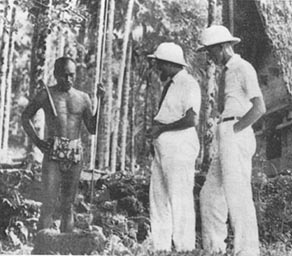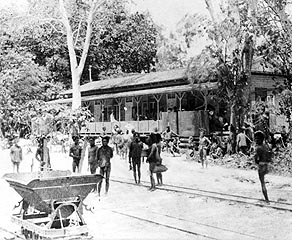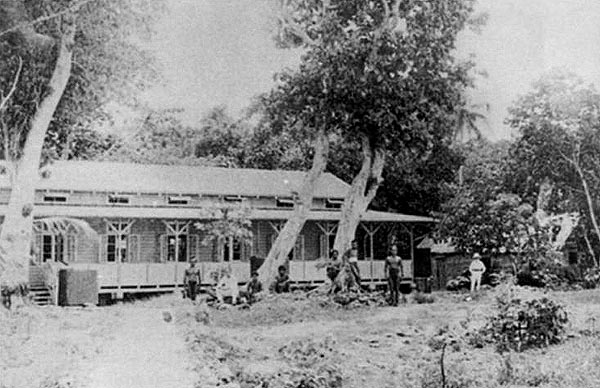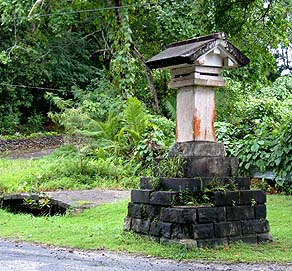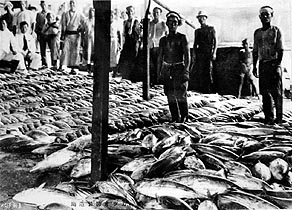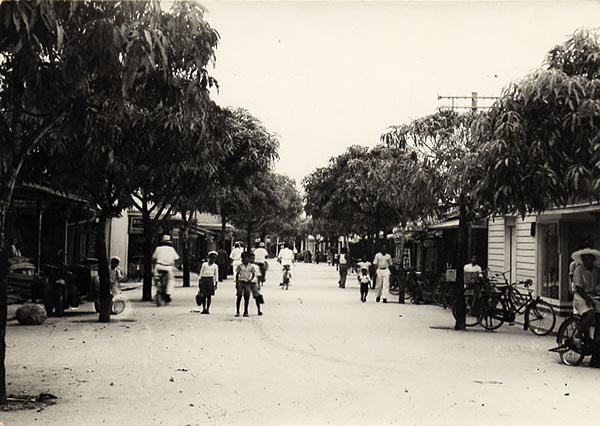 |
 |
 |
 |
||||
|
|
|
|
|
|
|
|
|
|
|
|||||||
|
|
|
|
|
|
“The German period probably introduced commercial enterprises to Palau,” Kathy states. “The German government just had a small regiment here in Palau. It was an administrator and a couple of helpers. And there was one interpreter that spoke Palauan and German. This man, James Gibbons, was the man who was really important. He had jumped ship and stayed here, and he knew English. And so he became the go-between for the chiefs here and any foreigner that came through. He was the ‘high commissioner,’ so to speak, during those days."
|
||
|
|
||
“The Germans started a police force. Winkler was the administrator’s name, plus these two guys. It was a central police force that had a program of getting coconuts planted throughout Palau. So he gives orders to all chiefs in the community, saying that each family would plant so much coconuts. And there would be competitions. That’s when the coconut trade started to flourish. "If you didn’t follow the orders, then you’d get jailed or your Palauan money would be taken as a fine or something like that. Although there weren’t that many of them, the Germans were a controlling administration. And their idea was to make a constabulary police force and then use it."
|
|
|
"They controlled the whole Palau, all the way, all over. The German marks were used as currency. It followed the trade that was established by O’Keefe on Yap, and the coconut was one of those economic developments. "And it was strict. Some of the stories were that if they came to a place and saw that the coconut plantations were not tended, so there’s a lot of bushes and the coconuts are not producing well, you would get fined for those kind of things. So people were really working very hard on this coconut project, and a lot of open spaces were planted with coconut. "The chiefs, they were powerless against this. The Germans had guns, and they secured people. There was one execution here that kept everybody quiet—a man who killed two Chinese workers."
|
|
|
|
|
“Palau was German territory,” Johnson remarks, “and then with the outbreak of World War I, the Germans basically relinquished it to the Japanese without a struggle. So it was kind of a smooth transition.”
|
||
|
|
||
“The Japanese came in 1914-1916," Kathy tells, "and they didn’t mince words. Japanese were Japanese, and they kept everybody in their place. If you were a local, that’s who you were. You’re a Korean, an Okinawan, they were strict classes under the Japanese. The Japanese were the elite. They were the controllers and the elite group in the islands. "We Palauans were treated like children, and not taken seriously. I don’t think anyone of us got to any higher position other than being an errand boy from the governmental office to the post office or something like that."
|
. |
|
“The Japanese just came in and took over,” Walter says. “That was probably pretty much the same throughout this part of the Pacific region, the Japanese being over here. They thought they had the right to do that, after this became sort of like a mandate island. They thought they had all the rights in the world to come and just colonize. "And they came to Airai, you know. See, Koror is a very small place. And they had to spread all over Babeldaob, and Airai was the closest. They needed Airai for a water source—Koror didn’t have enough water."
|
|
|
|
|
“We weren’t consulted as to where Palau was going or regarding any decisions made for the economy," Kathy states. "It was all completely Japanese. They had their own police force. There was a police force composed of Palauans, and that’s how they got to control the people. Some of these Palauans they had in the police force were high clan, and so naturally people were listening to them and they had the authority of the Japanese behind them. So it was pretty much ‘no questions asked'."
|
||
|
|
||
| The Japanese presence in Palau had, among other things, a significant impact on the islands' society.
|
||
|
|
||
|
|
|
|
|
|

|
| Airai Home | Map Library | Site Map | Pacific Worlds Home |
|
|
|
|

|
|
|
|||
| Copyright 2003 Pacific Worlds & Associates • Usage Policy • Webmaster |
|||

